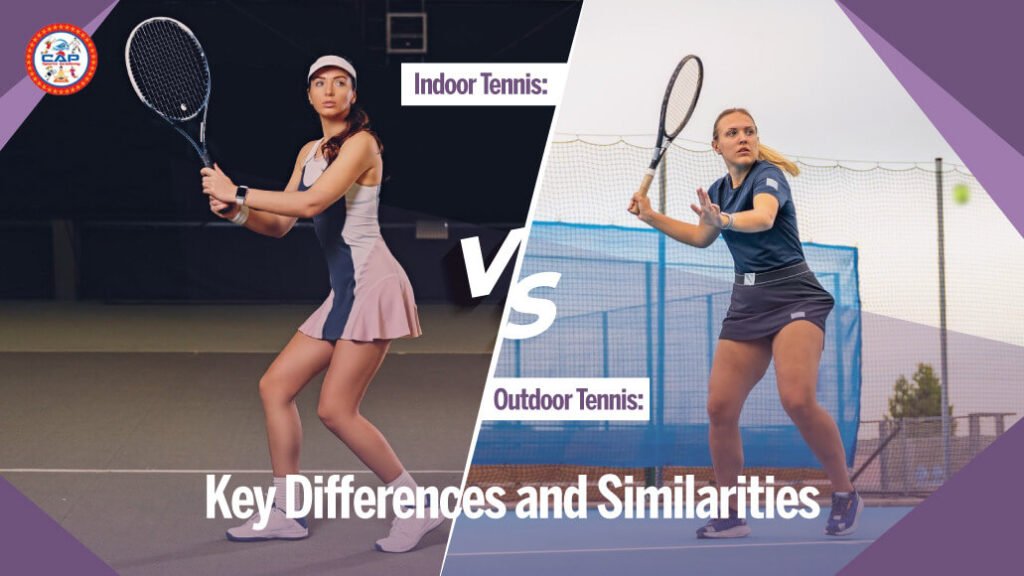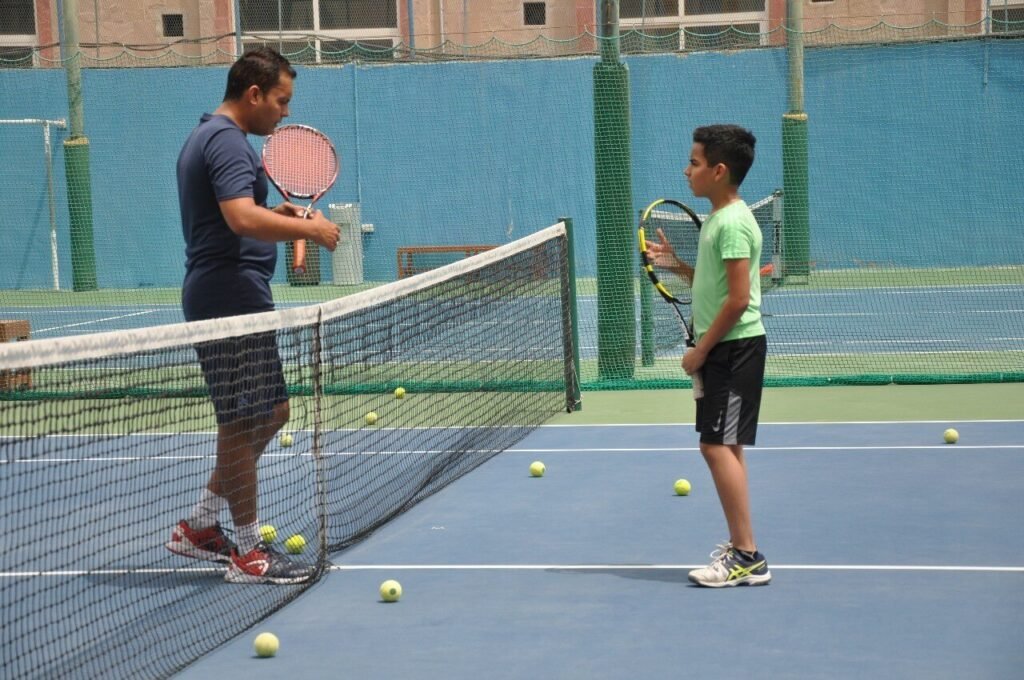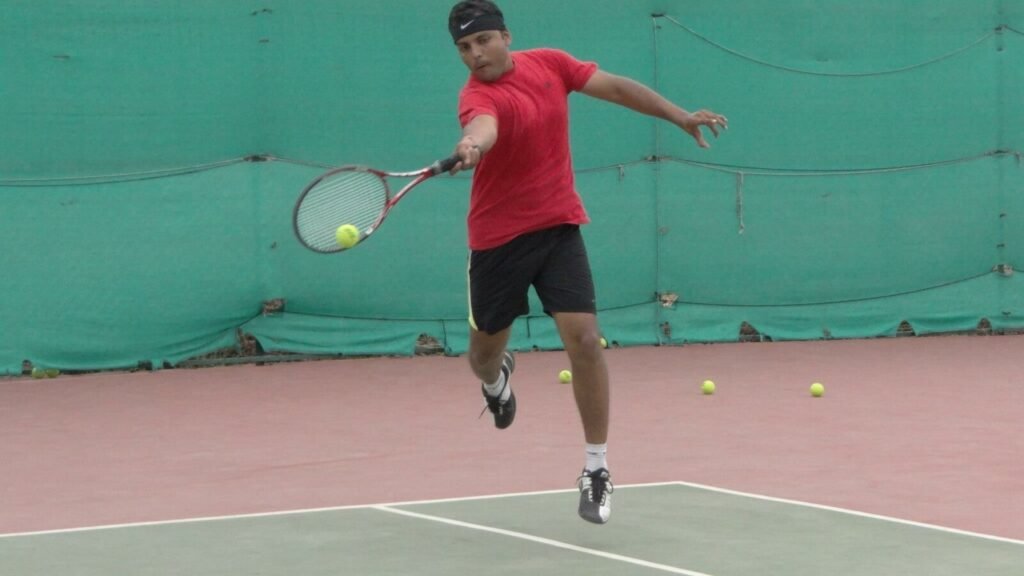
The type of tennis court you play on—hard, grass, or clay—as well as the indoor versus outdoor environment have a big influence on the game. Let’s explore the differences between playing tennis indoors versus outdoors and how they impact play.
Indoor vs. Outdoor Tennis
Given the harsh summers in Dubai, tennis is played indoors for at least three months of the year. You can play tennis indoors without worrying about the sun or wind. The courts are leveled smooth, and free of cracks, creating the ideal setting for competition. The outdoors is a whole other story. The ball is collecting moisture and dirt, which causes the ball to move more slowly. Along with temperature, wind is a major factor.
Which Might Suit Your Style?
Which type of player are you? If you enjoy powerful shots and like to finish points quickly, Indoor Tennis Academy In Dubai will suit your style since it rewards shorter points and aggressive play. Hitting with less spin and more power works best here. In doubles, try to get to the net and finish points with strong shots. If you’re fast, use your speed to your advantage by being active at the net and making quick moves to intercept the ball.
If you’re a patient player who enjoys solving challenges, outdoor tennis might suit you better. In outdoor tennis, you have an additional opponent—the weather. Some players like this challenge and use it to frustrate their opponents, making them play less patiently. Spin becomes more important outdoors because the wind can make the ball behave unpredictably without it. In doubles, you’ll need a good lob to succeed since hitting overheads in the sun and wind is tough. Shots that would be winners indoors often come back outdoors, so you need to be smart, patient, and have a variety of shots to be effective.
Choosing the Right Equipment
For indoor tennis, you’ll want shoes with a good grip to avoid slipping on the smooth court. The balls used indoors are usually the same as outdoors, but you might find that they bounce differently because of the flooring.
For outdoor tennis, you might need shoes with better support to handle different surfaces like clay, grass, or hard courts. You’ll also want to bring along sunscreen to protect yourself from the sun.
Adapting to Different Conditions
Playing indoors means you don’t have to worry about the heat, wind, or rain, so your shots will be more predictable. But outdoors, you’ll need to adjust to the weather. Wind can make the ball move in unexpected ways, and the sun can be bright in your eyes. Learning to adapt to these changes is part of the fun of outdoor tennis.
Court Speed Differences
Indoor courts are usually faster because they have a smooth surface, making the ball bounce quicker. Outdoor courts can vary depending on the surface. For example, grass courts are fast, while clay courts are slower. You’ll need to adjust your game based on how quickly the ball moves on the court you’re playing on.
Tips for Switching Between Indoor and Outdoor Tennis
It can be difficult to move from indoor to outdoor tennis, but you can do it smoothly if you prepare well and have the right mindset. The following tips can help you manage the change:
1.Get Familiar With The Playing Conditions
It’s crucial to modify your game on indoor courts because they typically have faster surfaces than outdoor ones. To become familiar with the way the ball moves and bounces, practice on both surfaces for some time.
2.Adjust Your Footwork
Your footwork may change when you go from an indoor to an outdoor surface. Keep in mind that different surfaces on outdoor courts may have varying degrees of grip, so move carefully around the court. Before any significant matches or tournaments, spend some time rehearsing on outside courts.
3.Modify the Shot You Choose
Compared to outdoor tennis, where there is more area for wide shots, players in indoor tennis frequently rely more on their groundstrokes because of the restricted space. Think about changing your shot choice according to the court’s conditions and available area.
4.Be Prepared for Weather Changes
Tennis outside exposes you to weather conditions such as wind and sun glare, unlike indoor tennis where climate control maintains constant temperatures. Playing in various weather settings will help you be more prepared for games.
5.Stay Mentally Focused
Playing tennis both indoors and outdoors demands mental flexibility as well. Regardless of the situation, remain open-minded about how the dynamics of the court may change and concentrate on carrying out your game plan.
Indoor Tennis: Controlled Comfort
Benefits of Playing Indoors:
1. No Weather Distractions:
One of the biggest advantages of playing indoor tennis is that you don’t have to worry about the weather. There’s no wind to blow your ball off course, no rain to interrupt your game, and no glaring sun in your eyes. This makes indoor tennis perfect for players who want a consistent playing environment, no matter the season or time of day.
2.Consistent Lighting:
Indoor courts have controlled lighting, so you never have to worry about shadows or changes in natural light as you play. This consistent lighting makes it easier to track the ball and maintain focus, especially during long matches.
3.Predictable Ball Bounce:
The smooth, even surface of indoor courts provides a predictable ball bounce. This means you can rely on your shots landing where you expect them to, allowing you to focus more on refining your technique and less on adapting to unpredictable bounces.
What to Expect When Playing Indoors
When you play tennis indoors, you’ll notice how much easier it is to concentrate on your game. Without the distractions of weather and lighting changes, you can put all your energy into improving your skills. Whether you’re practicing your serve, working on your footwork, or sharpening your strategy, the controlled environment of an indoor court helps you make the most of your practice sessions.
Benefits of Playing Outdoors
1.Enjoying Fresh Air and Natural Light:
Playing tennis outdoors lets you enjoy the beauty of nature while you play. The fresh air and natural light can make your game feel more invigorating and enjoyable.
2.Experiencing Different Playing Conditions:
Outdoor tennis courts expose you to a variety of conditions, from different court surfaces like clay, grass, or hard courts, to varying weather patterns. Each of these factors changes the way the game is played, offering a new challenge every time you step onto the court.
3.Adapting to the Weather:
Weather plays a huge role in outdoor tennis. The wind can affect your shots, the sun can make it hard to see, and rain can even stop a match. But these challenges also make the game more exciting. Adapting to the weather teaches you to be flexible and think on your feet.
What to Expect When Playing Outdoors:
When you play outdoors, expect the unexpected! The weather will keep you on your toes, and you’ll need to adjust your game to match the conditions. Some days, the wind might push your shots off course, while other days, the sun could make it harder to see the ball. But these challenges are what make outdoor tennis unique and fun.
Conclusion
Upon analyzing the pros and cons of indoor and outdoor tennis, it is evident that each of them has unique benefits and drawbacks. A regulated setting with reliable playing conditions, weather protection, and improved vision thanks to appropriate lighting is what indoor tennis offers.
On the contrary, playing tennis outside provides a more organic experience with fresh air, different court types, and flexibility to adjust to shifting weather.
Ultimately, your decision and the circumstances will determine whether an indoor or outdoor tennis academy in Dubai is preferable.


